This article was co-authored by Deanne Pawlisch, CVT, MA. Deanne Pawlisch is a Certified Veterinary Technician, who does corporate training for veterinary practices and has taught at the NAVTA-approved Veterinary Assistant Program at the Harper College in Illinois and in 2011 was elected to the board of the Veterinary Emergency and Critical Care Foundation. Deanne has been a Board Member of the Veterinary Emergency and Critical Care Foundation in San Antonio, Texas since 2011. She holds a BS in Anthropology from Loyola University and an MA in Anthropology from Northern Illinois University.
There are 7 references cited in this article, which can be found at the bottom of the page.
This article has been viewed 320,216 times.
A swollen abdomen is a potential symptom of a wide variety of ailments in cats. Swollen abdomens may occur quickly or over time. Regardless of the timeline, though, you should treat a swollen abdomen as a potentially serious condition and try to come to a diagnosis as quickly as possible. By observing your cat, consulting with your vet, and considering possible ailments, you’ll better be able to arrive at a diagnosis.
Steps
Considering Possible Causes
-
1Look for signs of malnutrition. Cats who have malnutrition often have a distended belly. A distended belly may appear as if it bloated or sticking out. It may look to have very little fat or muscle covering it. Malnutrition is common in cats who:
- Eat food prepared at home.
- Are kept on a vegan or vegetarian diet.
- Lack enough Vitamin E, copper, zinc, and potassium.
- Eat food that contains a lot of vegetable oil.
-
2Observe to see if the cat is simply overweight. Typically, a cat will need about 30 calories a day per pound of weight. If your cat consumes more than this, they may become obese.
- Consult your vet and/or the nutritional information on the back of your cat food packaging.[1]
- You can use a cat body condition score chart to determine if your cat is overweight, such as the one found here: https://www.wsava.org/sites/default/files/Body%20condition%20score%20chart%20cats.pdf.
Advertisement -
3Notice signs of Feline Infectious Peritonitis (FIP). FIP is a potentially fatal condition that starts as a viral infection and is common in areas or households with a high cat population. In addition to a distended abdomen, diarrhea is one of the most common signs of FIP.
- FIP can be confirmed through blood tests that test liver enzyme levels, bilirubin levels, and globulin levels.[2]
- Wet FIP can also be diagnosed by obtaining a sample of the abdominal fluid.
-
4Look for signs of infection, virus, or parasites. There are a wide variety of communicable diseases that may cause a swollen abdomen in cats. While most cases are minor, some might lead to serious problems for the affected cat. Look for symptoms of:
- Pyometra, which is an infection in a female cat’s reproductive system. Pyometra may manifest in lethargy, lack of appetite, or frequent urination.
- Intestinal worms. The most common symptom of intestinal worms may be rice-like objects in your cat's fecal matter or around their anus.[3]
-
5Identify signs of cancer or a tumorous growth. These are perhaps one of the most serious causes of a swollen abdomen in cats, and you should seek veterinary care immediately if you suspect it. Some of the most common symptoms of cancer or tumors are abnormal skin growths and/or loss of appetite.[4]
-
6Look for signs of metabolic or digestive issues. Metabolic and digestive issues (like diabetes and colitis) may be one of the most common causes of swollen abdomen in cats. Common signs include change in appetite, weight change, and/or a decline in energy level.
- If you suspect your cat has a metabolic or digestive issue, you may need to have your vet run blood tests to confirm or rule out these conditions.[5]
Consulting Your Veterinarian
-
1Explain the timetable of your cat's swollen abdomen. Give your vet a sense of when and/or how quickly your cat developed a swollen abdomen. This is important information your vet will need when they diagnose your cat. Inform them if:
- Your cat developed a swollen abdomen overnight or over the course of several days.
- Your cat developed a swollen abdomen over the course of several weeks or months.
-
2Discuss your cat's eating patterns. Your cat’s appetite is likely connected to their swollen abdomen. This is because an infection in the abdomen or other problems in the digestive system will impact whether your cat wants to or even has the appetite to eat. Let your vet know if your cat:
- Is eating less.
- Is eating more.
- Has a complete lack of appetite.
- Throws up after eating.
- Has been started on a new food recently.[6]
-
3Allow your vet to run bloodwork. Bloodwork is essential in helping to arrive at a diagnosis about what is causing your cat’s swollen abdomen. Without bloodwork, your vet won’t have basic information about your cat’s immune system and more. Bloodwork may:
- Give your vet information about your cat’s immune system. If your cat has an infection, like pyometra, they will have elevated white cell counts.[7]
-
4Ask your vet to run diagnostics. Take your cat to a board certified internal medicine specialist for an endoscopic exam and biopsy. The vet may have to run a variety of diagnostic tests to arrive at a proper diagnosis. Some diagnostics that might shed light on a swollen abdomen include:
- X-rays. An X-ray might help your vet locate any cancerous growths or infected organs.
- An ultrasound. An ultrasound will give your doctor a lot of information and may help rule out or confirm the diagnosis of cancer. In addition, it will let the vet know if there is an accumulation of fluid in or around the abdominal cavity.
- A biopsy. If your vet locates a growth or infected area within your cat’s abdomen, they might need to take a biopsy.[8]
References
- ↑ http://www.catster.com/cat-food/how-much-should-i-feed-my-cat
- ↑ https://icatcare.org/advice/cat-health/feline-infectious-peritonitis-fip
- ↑ http://www.pethealthnetwork.com/cat-health/cat-diseases-conditions-a-z/feline-infectious-peritonitis-fip
- ↑ https://www.petfinder.com/cats/cat-health/5-common-colon-problems-in-cats/
- ↑ https://www.petfinder.com/cats/cat-health/5-common-colon-problems-in-cats/
- ↑ http://pets.webmd.com/cats/cat-flatulence-gas
- ↑ https://www.vetary.com/cat/condition/fluid-abdomen
- ↑ http://www.petplace.com/article/cats/diseases-conditions-of-cats/symptoms/abdominal-distension-in-cats
About This Article
To diagnose the cause of a swollen abdomen in your cat, keep an eye out for symptoms like frequent urination, lethargy, or lack of appetite, which could be signs that your cat has an infection or parasite. Also, check your cat’s litter box to see if it’s suffering from diarrhea, which could indicate a serious viral infection, such as FIP. If you spot these symptoms, take your cat to the vet right away, since conditions like FIP can be fatal. At your appointment, your vet will run tests, such as bloodwork and X-rays, to diagnose the cause of your cat’s swollen abdomen. For more advice from our Veterinary co-author, like how to identify tumorous growths in your cat, keep reading.
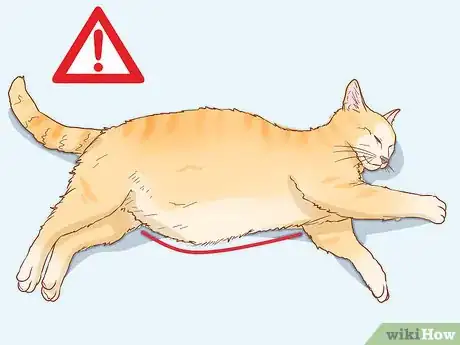

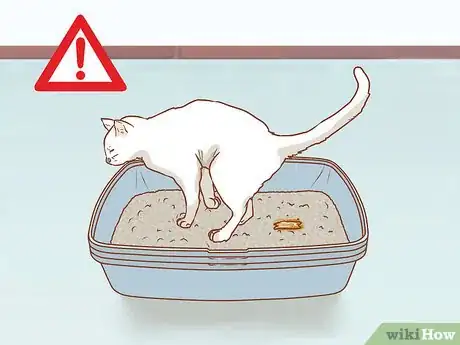
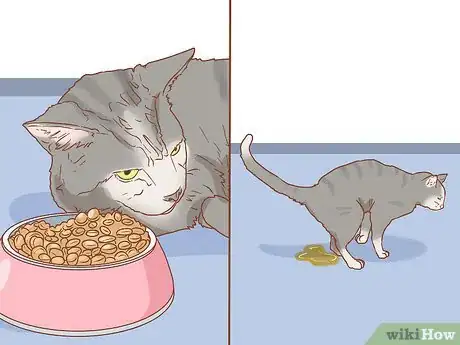
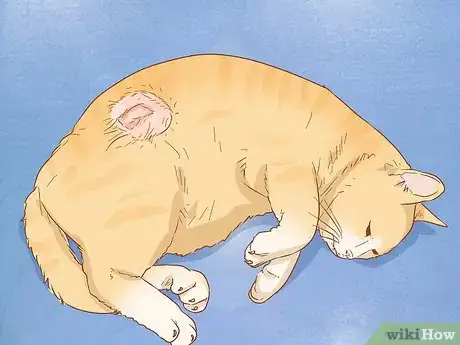
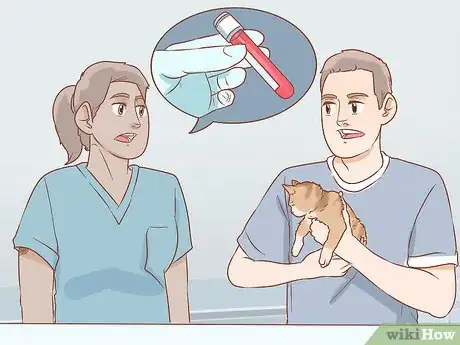

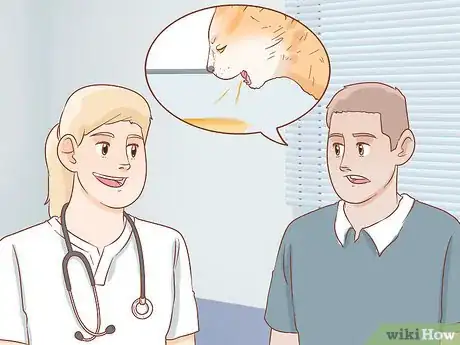

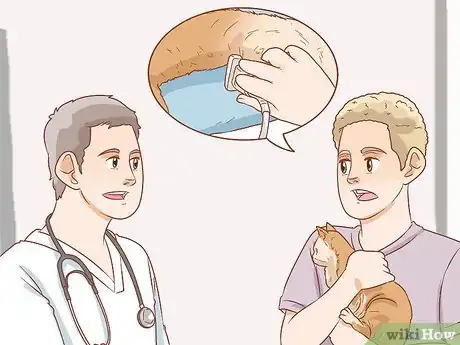


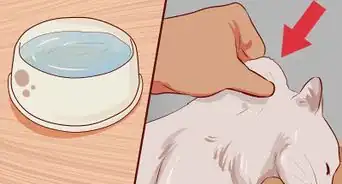
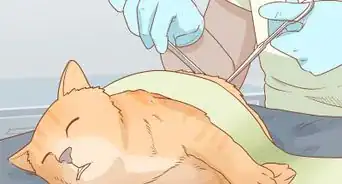
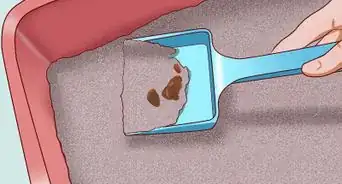




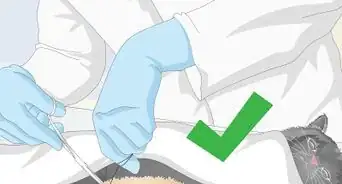

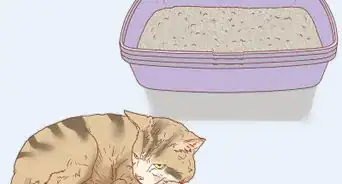










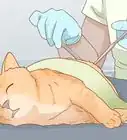



































Medical Disclaimer
The content of this article is not intended to be a substitute for professional medical advice, examination, diagnosis, or treatment. You should always contact your doctor or other qualified healthcare professional before starting, changing, or stopping any kind of health treatment.
Read More...